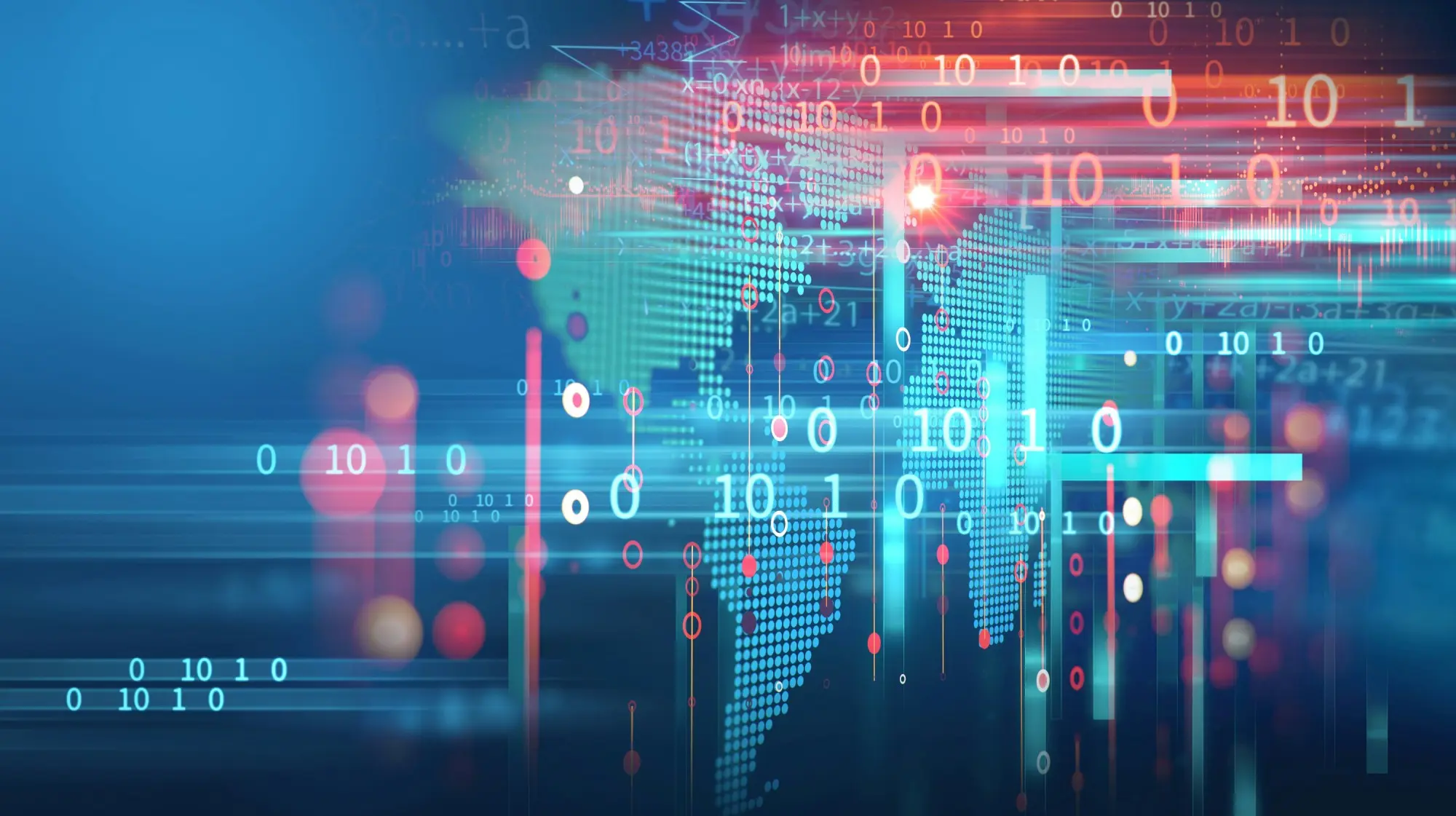Telegram’s TON: $1.7 Billion Raise, SEC Courtroom Defeat, and Victory through Decentralisation – A Legal Tale and Insights
Summary: Join Sergey Ostrovskiy as he unravels the dramatic tale of Telegram's TON blockchain, from its record-breaking $1.7 billion ICO to the courtroom showdown with the SEC in 2020, and its ultimate triumph via decentralisation in a couple of years after. This article offers a comprehensive look at the legal and strategic maneuvers that defined TON's journey and made their success possible
Authors:

Sergey Ostrovskiy
Partner

Almost everyone in the Web3 space has heard about the Telegram ICO, where the messaging app raised over $1.7 billion in two rounds of the Gram token presale back in 2018. This raise still ranks as the second-largest in history.
Many also remember that the U.S. Securities and Exchange Commission (SEC) managed to obtain a court order to halt the distribution of Gram tokens, effectively stopping the ICO and forcing Telegram to abandon its plans to launch the Telegram Open Network blockchain and the Gram token.
Despite these setbacks, today, the TON blockchain is working and has a massive market, with its token ranking 9th in market capitalization, surpassing giants like TRX, ADA, and DOT. A remarkable story with an impressive outcome... but how?
The TON Story of 2018–2020
In 2018, one of the biggest news stories in both the blockchain and financial industries was the Telegram “ICO”. In two presale rounds, Telegram raised $1.7 billion—so much that they decided to forgo a public token sale entirely. I remember the huge pools of buyers forming syndicates to participate in the presale, as the minimum check was $20 million. Despite the massive round, the project was oversubscribed.
After a long development period, on October 3, 2019, Telegram announced that the Telegram Open Network and Gram token would launch by the end of the month. Exactly a week later, on October 11, the SEC filed a lawsuit against Telegram, accusing them of an illegal sale of unregistered securities in the U.S., and promptly obtained a temporary restraining order against Telegram Group Inc. and TON Issuer Inc. to halt the distribution of Gram tokens.
Interestingly, Telegram claimed that for the “last 18 months”—essentially since the ICO began in 2018—they had voluntarily sought feedback from the SEC on the TON protocol and Gram token launch, providing “thousands” of pages of documents, numerous letters, calls, and even making changes to the TON blockchain to address the Commission’s concerns.
A few days later, Telegram informed investors that the protocol launch was postponed to the end of April 2020. The situation was complicated by the fact that under their SAFT agreements, if the protocol was not launched by the end of October 2019, investors were entitled to a refund. However, Pavel Durov managed to convince investors to accept the postponement and agree not to demand refunds.
Eventually, the SEC's battle against Telegram seemed to end on March 24, 2020, with the Southern District of New York Court issuing a preliminary injunction against the distribution of Gram tokens, essentially suspending the whole project and network launch.
On April 30, Pavel Durov informed investors that the protocol and token would not be launched on time due to the court order. On June 10, 2020, the SEC and Telegram settled the dispute, with Telegram agreeing to pay an $18.5 million fine and return $1.22 billion to investors. By the end of June, investors were offered various compensation options, including receiving about 80% of their invested funds immediately or 110% in one year.
Telegram ICO Legal Structure
The Gram token sale was structured through two companies: Telegram Group Inc. (holding company) and TON Issuer Inc. (token issuer), both registered in the British Virgin Islands (BVI). In 2018, BVI had not yet introduced VASP regulation, making it a justified choice as the project faced no regulatory restrictions in its home jurisdiction.
The dual-company structures are normally employed to manage operational risks more effectively. In this case, it allowed to separate the risks and responsibilities associated with the token launch and distribution from the project's major assets and funds. Additionally, the ICO structure was entirely separate from Telegram’s core business and corporate structure, which ultimately worked out as the messenger itself and its operational companies were not involved in the legal proceedings.
The sale was conducted via SAFTs—simple agreements for future tokens—which granted holders the right to receive tokens in the future, post-network launch. Until the SEC vs. Telegram case, many lawyers (including U.S. “big-law” firms) considered this scheme a safe way to sell tokens in the U.S. The scheme was as follows:
- The token and the sale instrument (SAFT) were viewed as two separate instruments.
- The SAFT was considered a security, issued under the US Securities Act.
- Once issued and distributed, the token itself was to be treated as a commodity, not a security, and thus not subject to regulatory restrictions.
Among nearly 200 investors, about 40 were U.S. residents, so the ‘American part’ of the round was structured under Regulation D 506(c), which allows for the sale of unregistered securities in the U.S. provided all buyers are verified accredited investors. Unlike exemption 506(b), this option also permits marketing and advertising campaigns.
The preliminary injunction in the SEC vs. Telegram case became the first major court precedent to examine the SAFT structure in the US. The court ruled that the initial token sale (SAFT), the distribution of Grams to investors, and the subsequent resale of tokens by investors should be viewed as parts of a single, large scheme to publicly distribute Gram tokens on the secondary market (essentially, underwriting securities).
Highlight:
Consequently, the entire scheme was considered an investment contract under the Howey Test and a public offering of unregistered securities in the U.S., which cannot be conducted without registration.
Events Following the 2020 Court Order
The story took an unpredictable turn after the court order. Following the injunction, the TON Community Foundation announced that TON could be launched even without Telegram, as the code was written and the network launch only required community consensus, with Telegram’s involvement being unnecessary.
They were correct: Telegram had published the entire code in their GitHub repository under the GNU GPL license, so anyone could use it as they wished.
On May 12, 2020, Pavel Durov announced that Telegram had ceased all work on the TON network and confirmed that the Telegram team was not affiliated with third-party projects developing other networks based on the original code. On May 24, the TON code development was transferred to "the open-source community”.
After Telegram’s initial announcement of abandoning the network launch, several major communities began working on their own versions of the Telegram Open Network in parallel:
1. Free TON – One of the first communities to loudly declare plans to launch the TON network. This group included TON Labs, one of Telegram’s major contractors involved in the original network’s development. Free TON launched on May 7, 2020, before Durov’s final statement about Telegram ceasing work on its network. The release followed an interesting model: over 170 participants, including exchanges, major validators, and developers, signed the Free TON Declaration, affirming the “return of power to the community,” decentralization strategy and criteria, the new "TON Crystal" token with the ticker 'TON,' and its distribution terms.
This launch was one of the first so-called ‘DAO product launches,’ which gained popularity in subsequent years due to tightening regulatory climates and which we will discuss below.
2. TON Community Blockchain – A Chinese community that planned to launch the TON token but, for some reason, on the Ethereum blockchain. This group’s launch was ultimately unsuccessful, and their subsequent history is unclear.
3. New TON – The stealthiest of the three projects. Unlike the others, this group chose to develop the original TON network, the testnet of which had been launched by Telegram before the court order. Little was known about New TON, except that the project included two key developers from Telegram’s original dev team and some other people associated with the messenger.
Almost immediately, New TON’s initiative established The Open Network Foundation or TON Foundation in Switzerland. According to public information, Anatoly Makosov and Kirill Emelyanenko, those two key developers of the original Telegram network, founded the organization. TON Foundation quickly amassed a decentralized team of contributors contributing to the open-source development.
On June 23, 2021, after more than a year of development, TON Foundation addressed Telegram in an open letter, requesting the transfer of the TON repository on GitHub and the domain, as:
“all the same, the Telegram team no longer needs them”
Surprisingly, Telegram handed over both the repository and the domain to TON Foundation, which allowed the New TON to officially become TON. Ultimately, the TON token we know now, ranked 9th by market capitalization, is the former New TON project token, and the "TON" network name stands for The Open Network.
Currently, TON Foundation is closely integrated with Telegram. Pavel Durov is giving interviews promoting the network, and the TON token is becoming the messenger's internal currency.
Highlight:
It appears that nearly two years after the court injunction in the SEC vs. Telegram case, Telegram’s token has launched and integrated into the messenger as initially planned by the Durov brothers.
In my view, Telegram emerged as the clear winner in this story. Moreover, it can be reasonably assumed that New TON was a controlled initiative by Telegram, launched after the court order. I have several reasons to support this:
- New TON initiative was led by the key developers of the original network, and the team included many persons associated with Telegram.
- New TON continued developing the original network without forking it, which, in that situation, was not entirely justified.
- Telegram transferred its GitHub repository and the ton.org domain specifically to New TON developers.
- By transferring its domain and repository, Telegram effectively endorsed New TON as the original Telegram blockchain and the successor to the Telegram Open Network.
- The Open Network has been integrated into the Telegram messenger, and even Pavel Durov is now promoting it.
Legal Analysis of Events After the Court Order
Let's start with the fact that a court order, like any legal action, is almost always directed at a specific identified person or group—this is the “basic”, sort of. The restrictive order in the SEC vs. Telegram was no exception and targeted the Telegram's ICO structure and their agents. Consequently, after the Telegram Open Network’s source code was published under the GNU GPL license, anyone could launch the network, as forks are a common occurrence in the blockchain community.
The open-source development allowed Telegram to “separate” the product from the messenger itself with ease, reinforcing the final “legend” that further development was carried out by third-party teams who simply took the code from its GitHub under GNU GPL.
Significance of Free TON
From a legal perspective, Free TON created an interesting precedent. This group launched their network almost immediately after the US court order and reasonably did so through a DAO, with a declaration signing ceremony and an emphasis on decentralization. This launch model made potential SEC lawsuits nearly impossible, as suing more than 170 DAO members worldwide, many of whom were anonymous, is a true legal nightmare and an impractical task.
If we wanted to be really picky, we could say that the Free TON DAO could have been better structured. Without a corporate structure, there was a risk of the entire group being recognized as a partnership (or unincorporated association), enabling attacks against publicly named Free TON DAO members, such as Kuna, BitScale, and CEX.IO. In a partnership, each member bears full joint and several liability for all organizational obligations, which could have allowed the shifting of all DAO liabilities to one or several public members. Nevertheless, it would unlikely have stopped the network launch.
Significance of New TON
The role of New TON in Telegram’s history is hard to overestimate. Telegram’s decision to exit and (presumably) continue working on the network through a third-party but controlled team was a brilliant move precisely because the court order did not apply to third-party teams. Telegram was prohibited from distributing Gram tokens and, consequently, launching the TON network, but other parties could do so, especially by renaming the token from Gram to TON and the network from Telegram Open Network to The Open Network.
The New TON group established TON Foundation and continued network development in stealth mode. Over a year after the SEC's victory in the case vs. Telegram, the network was launched anyway, and after attracting numerous validators, it became sufficiently decentralized. Strong decentralization provides, among other things, legal safety for the network.
In the end, Telegram managed to raise and partially utilize $1.7 billion in 2018-2020, allowing them to quickly complete the initial network development, which became the foundation of the TON blockchain we know today. After settling with the SEC, Telegram raised funds by issuing bonds and repaid all ICO investors, fulfilling contractual obligations and settlement conditions with the SEC.
Decentralization as a Risk Management Tool for Blockchain Projects
DAO is not only an organizational form for Web3 communities but also an effective risk management and legal protection tool. Decentralization is particularly relevant for projects crossing regulatory “red lines,” especially those processing user funds: payments, lending, margin trading, DEXs, and DeFi in general.
Highlight:
Such projects often face two options: assume certain legal risks and launch centrally or decentralize and relinquish control.
This is because DeFi protocols currently cannot operate in an actually regulated environment. Any license or registration implies numerous obligations and restrictions incompatible with DeFi, starting with general compliance and ending with verification of every user. This is why DeFi projects are among the most complex in legal work.
Proper Decentralization
The preamble of the MICA—the EU regulation on Crypto Asset Markets, coming into full force in December 2024—explicitly states that activities related to crypto-assets conducted in a fully decentralized manner and without intermediaries should not be subject to regulation. However, persons having degree of control over crypto-asset-related activities, even those with partial decentralization, may be subject to regulation.
Therefore, it’s crucial to understand that we are not talking about fictitious DAOs managed by founders or a small group but sufficiently decentralized organizations. Many regulators have a good understanding of the blockchain industry and protocols, can analyze transactions, and have vast resources. In court, the legend of a “dummy” DAO will not hold up and will quickly collapse, leaving the team and founders without protection.
A sufficiently decentralized organization is a complex concept. Achieving it requires significant organizational, technical, and legal efforts. Sometimes, when a project team considers DAO launch impossible or hard to accomplish during the initial release, a hybrid launch model can be employed, with the DAO transition to occur at the earliest opportunity.
Unfortunately, DAOs “in a vacuum” also do not work, so in any scenario, planning and structuring the DAO transition is advisable, same as establishing correct public communication, since some regulators even listen to podcast recordings to use founders' words as evidence in court.
Lastly, to legally protect the DAO itself, it can also be legally structured using so-called DAO legal wrappers. Different wrappers have different statuses and are suitable for various purposes. For example, a foundation does not wrap a DAO and rather acts as an ecosystem unit, through which assets and IP can be held, and certain operations can be conducted. In its turn, a DAO LLC merges with the on-chain DAO and can recognize all token holders as company members, providing them with corporate protection by default. Some DAOs may use several legal wrappers for more comprehensive protection.
Conclusions
What conclusions can be drawn from this story? Each person might have their own, but I have two main ones. First, a well-thought-out strategy can still defeat Goliath. Second, proper decentralization can indeed protect a Web3 project.








